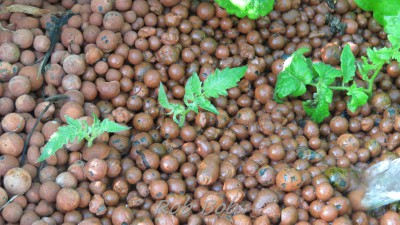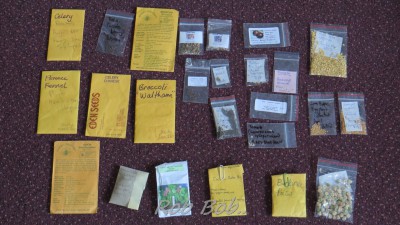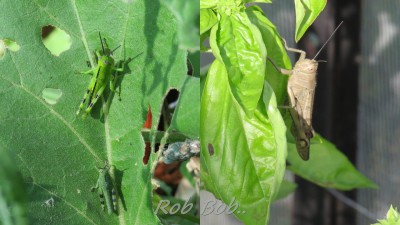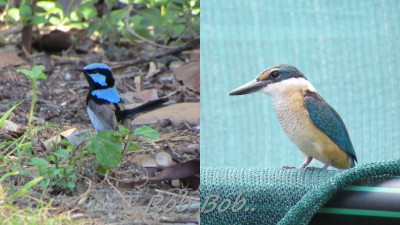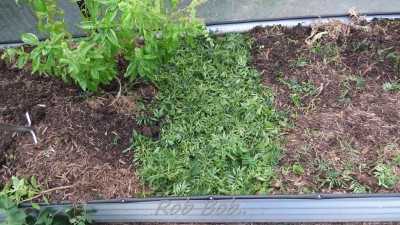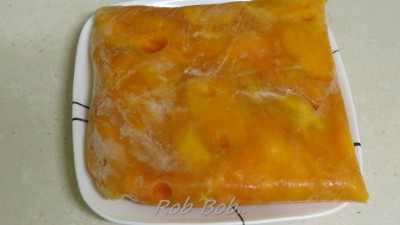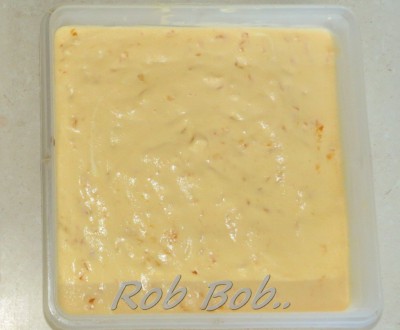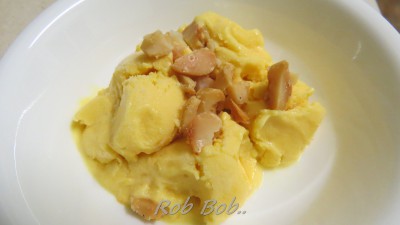Getting ready for the cooler months..
Even though I'm sitting here typing up this blog in the 37°C heat of our lounge room I have already started to get the plants & the patch organised for the coming cool weather growing season.. As we don't get the freezing temperature folks in the Southern states get, I can't really call what we get here in Ipswich Winter.. Our average Winter high is around 22°C/71.6°F & the average Winter low is 6°C/42.8°F.. Every year we get a few Winter mornings of 0°C/32°F or below, but that only for a few hours at a time.. We do get it fairly easy here weather wise in the subtropics come Winter so we are able to get away with growing some crops that others can only grow during Summer..
Seed selection..
After the poor performance of the tomatoes this Summer I have decided to try & grow our main crop during the cooler months.. The plants were hit fairly badly with a mite outbreak & had to be protected from the fruit fly, 2 things I hope won't be much of an issue during the cooler months.. The varieties I will be trying are Berkeley tie dye, Black Russian, Boxcar Willie, carbon & Brads Black Heart..
The KY1 tomatoes are been started from cuttings taken from a plant growing in the patch at the moment.. They have been popped into the aquaponic grow bed as I find plants set roots in there very quickly..
Along with the tomatoes some other fruiting plants like capsicum & eggplant will be going into the patch.. We will be growing some proven varieties that include eggplant, long purple & udumalapet as well as bulls horn capsicum.. I think we will have enough warm weather to get the plants up & producing before the weather cools down too much.. Even if these plants don't do the best, we will have a head start on the next Summer growing season..
The other plants that will be going in will be the typical cool weather varieties including peas, beans, broccoli, cauliflower, kale, onion, celery, fennel & some various leafy greens..
When it comes to working out what & when things can be planted out in the patch, I like to use the free online Gardenate guide to get a rough idea.. The site also has listings for many different zones for us here in Australia as well as zone listings for NZ, UK, South Africa, USA & Canada.. There is also some helpful cultural notes for the plants listed in the guide which comes in handy for a quick reference when planning out a planting layout & schedule..
Pests in the patch..
Over the past few months the garden has been overrun with grasshoppers with a few of the little beasties finding their way into the hoop house..
I've decided to give the patch a bit of a spray with some Neem oil mix.. Neem's active constituents are safe to use around birds, mammals & reptiles so I'm not concerned about using it in the patch.. I read one study that said it can be toxic at high doses to fish so I will be using it well away from the aquaponic set up..
Now that there are very few fruiting plants left in the hoop house & due to the numbers of the grasshoppers, some of the insect netting has been removed from the sides.. This has allowed the wrens & kingfishers into the main part of the patch to feast on the little hoppers.. It has been most enjoyable to watch the wrens & kingfishers dart in & out feasting on them every morning :)»
Prepping the beds..
The top bed in the patch has been given a bit of a makeover as some of the soil is looking heavy & a bit of a surprise was found on 2 of the tomato plants roots..
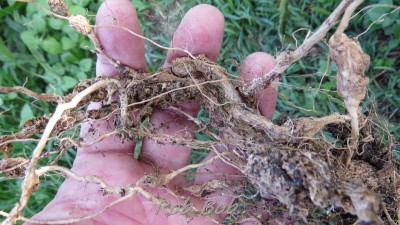
Next layer to go on top of this will be some screened compost from the chicken pen followed by layer of worm castings & topped off with some mulch.. The bed will then be left for a month or so to let the green manure break down before some cauliflowers or broccoli are planted out.. Might pop a few beetroot or silverbeet in between the brassicas as well, we shall see.. I think all the nutrients in the compost & castings will be more than enough to feed up the soil & the marigold green manure will make some great tucker for the worms in the bed..
There are 2 other beds that will get the compost & castings treatment in the main part of the patch before they are planted out later on with some brassicas or greens.. Am thinking of planting out one of them full of silverbeet just for the chooks.. I figure that they deserve a bit of a thank you for all the eggs & compost they provide us with ; )»
Aquaponic & aquaculture systems..
There hasn't been much movement on the new fish farm system or the renovations to the aquaponics so I have no new little additions to show off as yet :/ Sorry about that folks.. Can't promise anything but hope to have a much better update on them both in the next blog..
Making up a home grown treat..
Decided to whip up a frozen mango yoghurt treat for the girls the other night using the mango flesh we have in the freezer.. Is a very cheap treat for us as we already make our own thick set pro biotic yoghurt & the mangoes are all home grown..
No ice cream machine is needed, just a food processor & freezer..
Just a quick note before we start, about ½ an hour before making up the frozen yoghurt pop the bowl you will be whipping the cream in into the freezer.. This isn't necessary but will make whipping the cream a lot easier.. You could also add the yoghurt in at the same time just to help chill it down a tad further..
Frozen Mango yoghurt..
200ml of whipping cream
1/3 cup of honey
600ml of firm yoghurt, Greek style works nicely & has a great tang to it..
Flesh of 3 large mangoes
Flat tray for freezing mix
- The first thing needed to do is freeze the mango.. Is probably best to dice the fruit into 2cm² cubes & freeze it on a tray.. This will make it easier for you & the food processor when it comes to chopping it..
- Once the fruit is frozen solid, it's time to whip the cream to firm peaks.. The aerated cream will help give you a lighter, softer finished product..
- Slowly drizzle the honey into the whipped cream.. This will help it mix through the yoghurt mix more smoothly later..
- Chop 1 mango worth of flesh in the processor until it is broke up into small chunks.. Set aside to mix through later..
- Add remaining mango & process until smooth.
- Pour in cream & honey mix & combine well..
- Taste test at this point & if you think it needs more honey drizzle a bit in to taste..
- Once combined stir through reserved mango then pour into flat tray & freeze until firm..
The first time I did this the mix set a bit too firm so I removed it, sliced it up into small sections & processed it again.. This lighten up the consistency & made a much smoother final dessert..
I think the best way to top off this very lush dessert is with some toasted macadamia nuts.. The 3 flavours complement each other very well I think..
This can also be made up with other frozen fruits like berries.. Koo has even asked if I think frozen lychee yoghurt would taste great, not too sure about that one myself ;)
That's about it for now.. If you have any questions about the cool weather crops we're going to sow, feeding up the beds or any on the aquaponics feel free to leave them below &I shall get back to you..
Cheers everyone & hope you all get to play in the patch..
Rob..
